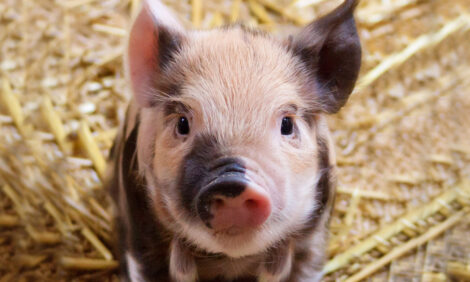



Cycles in China’s Pork Market
The sharp increase in pork prices during 2007 drew attention to the Chinese market’s volatility and cycles, highlight Fred Gale, Daniel Marti and Dinghuan Hu in a report entitled ‘China’s Volatile Pork Industry’ from the USDA Economic Research Service.Fluctuations in prices and production, however, are not new to the industry. Cyclical patterns in the hog market were recognized in the United States during the 19th century and studied extensively by agricultural economists beginning in the early 20th century (Haas and Ezekiel, 1926). Chinese scholars and analysts have observed similar cyclical fluctuations in China (Liu and Wang 2009; 2010). Zhang (2010a) identified six periods of pork-price increases (1985, 1988, 1994, 1997, 2004, 2007). Several Chinese studies identified a series of four three– to four–year cycles in the hog sector between 1996 and 2009 (Han and Qin, 2007; Liu and Wang, 2009; Nie et al., 2009). The price increase during 2007 prompted Chinese officials to intervene extensively in the pork market to stabilise prices, which is discussed later in this report.
The well-known ‘cobweb model’ was developed in the 1930s to show how cycles in pork prices can result from the biological lag in supply response (Ezekiel, 1938; Coase and Fowler, 1935). In China, it takes 18 to 20 months to raise a new generation of gilts to breeding age, produce a crop of pigs and then raise those pigs to slaughter weight (Zhou, 2010). Thus, when an increase in pork prices prompts farmers to expand production, the corresponding increase in pork supply may take more than a year to enter the market. Conversely, when farmers slaughter sows during a downturn in the market, the sector’s ability to expand supply is constrained in future months.
Seasonal fluctuations in demand that correspond to major holidays also affect China’s pork market. Hog inventories build up in anticipation of peak demand before the Chinese New Year (usually late January or early February) and the mid-Autumn festival and National Day (mid-September to 1 October). In the months following these festival/holiday periods, demand, hog slaughter and pork prices often decline.
Cycles are evident in the ratio of hog price to corn price, an indicator of short-term profitability in the hog sector. A high ratio indicates that the output price (for hogs) is high relative to the price of the chief input (corn), which typically induces farms to build up hog inventories to increase production. Conversely, a low ratio signals financial losses, which prompt farms to decrease hog inventories.
China’s hog-corn price ratio has generally fluctuated around 6:1 (figure 8; see section on The Hog-Corn Price Ratio below). A series of fluctuations in China’s pork industry are marked by peaks in the ratio early in 2005 and a much higher peak three years later in 2008. Periods of low prices and severe losses for hog producers occurred in mid–2006 and mid–2009, again three years apart.

The recent cycles resulted from a chain of events that began in 2004, when concerns over an outbreak of avian influenza drove Chinese consumers to substitute pork for poultry meat. The increased demand for pork increased hog prices and encouraged farmers to expand hog inventories. Hog prices peaked in 2005 but subsequently fell as the supply of pork surged. Prices reached a low in mid–2006, and many producers experienced losses and culled sows. In late 2006 and 2007, animal disease epidemics reduced the supply of pork, and pork prices again began to rise. The previous year’s cull of sows and continuing concerns over the effects of animal diseases constrained the industry’s ability to expand production in the short run. Demographic changes also affected the pork supply as off-farm employment and rising incomes encouraged many rural families to purchase pork instead of raising hogs in their backyards. The inelastic short–run supply contributed to a sharp increase in pork prices.
Rapidly rising pork prices became a national concern in China during 2007. China’s consumer price index for meat was up 40 per cent year–over–year, the highest increase among all categories. The jump in pork prices contributed to the country’s high inflation rate that year.7
An NDRC study of the factors behind rising pork prices during 2007 focused on the tight supply of feeder pigs. The report found that hog prices received by farmers were up 45 per cent year–on–year but that feeder pig prices were up 60 per cent. The feeder pig supply was reduced by the culling of sows and the effects of a disease epidemic that caused sows to abort.
High prices for hogs in 2007 and early 2008 attracted investment in large Chinese hog farms and pork processing. Investors included meat, feed and real estate companies; overseas investment banks; and a well-known Chinese software entrepreneur (Jiao and Kou, 2010). According to official statistics, China’s hog inventory grew five per cent during 2007, and it expanded at a similar pace in 2008. The hog inventory peaked at nearly 470 million head in late 2009, an increase of 51 million from the 2006 total. This marked China’s largest expansion of hog inventories since 1996-99.
During 2009 and 2010, two periods of losses and recovery occurred about a year apart, interrupting the pattern of three–year cycles. The hog-corn price ratio reached a low point in May 2009, about three years after the rapid increase in pork prices in 2007. During the second half of 2009, prices rebounded briefly but the hog-corn price ratio fell again during the first half of 2010, following outbreaks of animal disease epidemics that led to many animal deaths and early slaughter of sick hogs. Furthermore, low prices and economic losses prompted many farmers to cull sows or exit the industry, and China’s hog inventory declined during early 2010. Hog prices rebounded in July that year and continued rising during the second half of 2010 and into 2011. The sector returned to profitability during the second half of 2010 but rising corn prices slowed the increase in the hog-corn price ratio. In early 2011, hog prices neared the historical high reached in 2008 and the hog-corn price ratio was 7:1, slightly above ‘normal’. Due to high corn prices, however, the 2011 hog–corn price ratio did not rise as high as it did during the 2008 peak period.
By mid–2011, rising pork prices were again a major influence on China’s consumer price index, as they had been in 2007. The sow inventory had yet to recover from the losses and culls of the previous year, and the tight supply of piglets slowed the industry’s expansion. High feeder pig prices seemed to be consistent with a limited supply of feeder pigs, and Ministry of Agriculture statistics indicated that sow inventories were down two to three per cent from a year earlier. In one article, industry analysts expressed unease that the situation would be ‘a repeat of the 2008 roller coaster’ (Sun et al., 2011).
The Hog–Corn Price Ratio
The hog–corn price ratio became a valued resource for US commodity market analysts in the 19th century as it reflected the ratio of output price to the price of the main input. At that time, many Midwestern farmers used hogs as an alternative way of marketing corn. When corn prices were low, farmers fed the corn to hogs instead of selling it on the market.
The hog–corn price ratio is now widely used in China as an indicator of hog sector profitability. Market analysts and policy–makers in China often view 6:1 as a ‘normal’ level for the ratio. Higher values are considered an indicator of profitability and expansion, while lower values are an indicator of losses and contraction. The break–even level is often reported to be 5.5:1. The ratio is not as widely used in the US hog industry today because corn accounts for a smaller share of production costs than in years past. The ratio’s value as an indicator is also questionable in the Chinese hog industry because corn is only one of many kinds of feeds used by Chinese farmers.
In China, the hog–corn price ratio is computed using prices in yuan per kg. In the United States, the ratio is traditionally computed in dollars per cwt for hogs and dollars per bushel for corn. Because the units used by the two countries differ, the US ratio is typically quoted as a much larger number. Using data from the 1970s, Van Arsdall and Nelson (1984) calculated a break–even (cash basis) ratio of 15:1 to 16:1, which would be equivalent to 8.5:1 to 9.0:1 calculated using prices in dollars per kilo. In a study of historical patterns in the US hog–corn ratio, Holt and Craig (2006) surmised that an increasing trend in the ratio beginning in the 1940s reflected diversification of hog feedstuffs during the post–war period. Recently, US hog market analysts have quoted a higher reference level of 18:1 to 20:1.
Chinese officials regarded the fluctuations in hog prices and profitability beginning in 2007 as evidence of unusual volatility. This prompted extensive government intervention to stabilise the market. However, a comparison with historical US data for 1909 to 2010 shows that the recent cycles in the Chinese hog–corn price ratio are not unusual (see figure). Chinese fluctuations are similar to cycles that occurred in the United States during the early 20th century. Coase and Fowler’s (1935) description of hog cycles in Great Britain during 1920 to 1933 is also remarkably similar to that of recent cycles in China.

Footnote
7The increase in China’s consumer price index was 12 per cent for all food and 4.8 per cent for all items during 2007.
Further Reading
| - | You can view the full report by clicking here. |
| - | Go to our previous news item on this story by clicking here. |
February 2012






